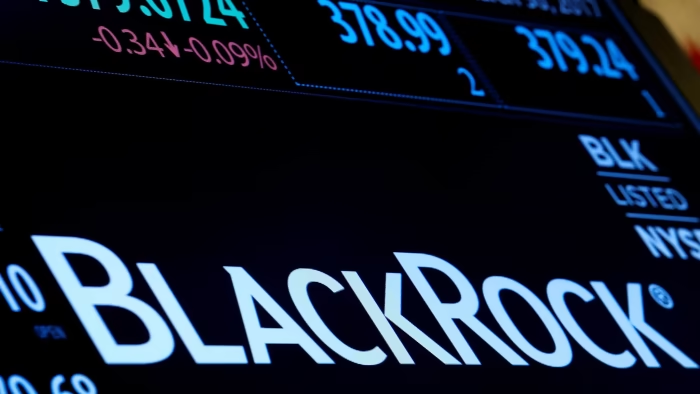The Federal Reserve (Fed) is gearing up for a significant decision on interest rates this Wednesday, and the financial world is abuzz with speculation. As the central bank evaluates the economic landscape, its actions will have far-reaching consequences for businesses, consumers, and investors alike.
In this detailed analysis, we’ll explore the key factors influencing the Fed’s decision, the potential outcomes, and what they could mean for the economy moving forward.
The Context: Why Interest Rates Matter
Interest rates are one of the Fed’s primary tools for managing the economy. By raising or lowering rates, the central bank can influence borrowing, spending, and investment activity across the country.
Over the past year, the Fed has pursued an aggressive rate hike strategy to combat inflation, which soared to multi-decade highs. These efforts have begun to yield results, with inflation moderating, but the journey is far from over.
Now, with the economy showing signs of resilience, the Fed must decide whether to maintain its current course or pivot to a different strategy.
Key Factors Influencing the Fed’s Decision
Several economic indicators are likely to weigh heavily on the Fed’s decision:
1. Inflation Trends
- The Consumer Price Index (CPI) has shown signs of cooling, but inflation remains above the Fed’s 2% target.
- Core inflation, which excludes volatile food and energy prices, continues to be a concern.
2. Labor Market Strength
- The U.S. labor market remains robust, with low unemployment rates and steady job creation.
- Wage growth, however, has slowed slightly, which may influence the Fed’s outlook.
3. Economic Growth
- Recent data indicates moderate economic growth, but concerns about a potential slowdown persist.
- Sectors like housing and manufacturing have shown some weakness, reflecting the impact of higher rates.
4. Global Factors
- International economic conditions, including geopolitical tensions and slowing growth in major economies, could also play a role.
- A stronger U.S. dollar, driven by higher interest rates, has created challenges for American exporters.
Possible Scenarios: What to Expect on Wednesday
Scenario 1: No Change in Rates
- The Fed could opt to leave rates unchanged, signaling a pause in its tightening cycle.
- This would allow policymakers to assess the impact of previous rate hikes before making further adjustments.
- Market reaction: Likely to be positive, as investors interpret the pause as a sign of confidence in the economy’s trajectory.
Scenario 2: A Modest Rate Hike
- A small increase in rates would indicate the Fed’s continued commitment to combating inflation.
- Such a move might be seen as a precautionary measure to prevent inflation from reaccelerating.
- Market reaction: Mixed, with some sectors welcoming the Fed’s vigilance while others express concerns about higher borrowing costs.
Scenario 3: A Surprise Rate Cut
- While highly unlikely, a rate cut would signal that the Fed is more concerned about economic growth than inflation.
- This scenario could occur if unexpected economic data points to significant weakness.
- Market reaction: Likely to be negative, as investors interpret the move as a sign of underlying economic trouble.
What the Markets Are Saying
Financial markets are closely monitoring the Fed’s moves, with mixed expectations about the outcome. Here’s what different sectors are anticipating:
1. Stock Market
- Investors are hoping for a dovish stance from the Fed, which could boost equity prices.
- Growth-oriented sectors like technology stand to benefit the most from a pause or a signal of rate cuts in the near future.
2. Bond Market
- Yields on Treasury bonds have been fluctuating in anticipation of the Fed’s decision.
- A rate pause or cut could push yields lower, while a hike might have the opposite effect.
3. Currency Market
- The U.S. dollar has strengthened significantly due to higher rates, but any hint of a dovish pivot could lead to a depreciation.
Implications for Consumers and Businesses
The Fed’s decision will have a direct impact on households and companies across the country:
For Consumers
- Borrowing costs for mortgages, auto loans, and credit cards are influenced by Fed policy.
- A pause in rate hikes could provide relief to consumers struggling with higher monthly payments.
For Businesses
- Higher rates increase borrowing costs, which can affect expansion plans and profitability.
- Small businesses, in particular, have felt the strain of tighter financial conditions.
The Broader Economic Picture
The Fed’s rate decision comes at a critical juncture for the U.S. economy. Policymakers face the daunting task of balancing two competing priorities:
1. Taming Inflation
- While progress has been made, inflation remains a persistent challenge.
- The Fed’s primary mandate is price stability, which means it cannot afford to let inflation expectations become entrenched.
2. Supporting Growth
- Higher rates have already begun to slow economic activity, particularly in interest-sensitive sectors like housing.
- The Fed must tread carefully to avoid pushing the economy into a recession.
Expert Opinions
Economists and financial experts have offered varying perspectives on what the Fed might do:
- Optimists: Some believe that inflation is on a sustainable downward path, allowing the Fed to pause its rate hikes without risking a resurgence.
- Cautious Observers: Others argue that the Fed should maintain its hawkish stance until inflation is fully under control.
- Critics: A minority contends that the Fed’s actions have already gone too far, warning of potential long-term damage to the economy.
Looking Beyond Wednesday
Regardless of what the Fed decides, its actions on Wednesday are just one step in a broader monetary policy journey. Future decisions will depend on how the economy evolves and whether inflationary pressures resurface.
Key indicators to watch in the coming months include:
- Inflation Data
- Monthly CPI and Producer Price Index (PPI) reports will provide insights into price trends.
- Employment Figures
- Labor market conditions will remain a crucial factor in shaping the Fed’s outlook.
- Consumer Spending
- Retail sales data will reveal whether households are feeling the pinch of higher rates.
Conclusion: A Pivotal Moment for the U.S. Economy
The Federal Reserve’s upcoming decision on interest rates is a pivotal moment for the U.S. economy. As policymakers weigh their options, the stakes are high, with implications for inflation, growth, and financial stability.
While predicting the Fed’s exact course of action is challenging, one thing is clear: the central bank’s decisions will continue to shape the economic landscape for months to come. Businesses, consumers, and investors alike will be watching closely as the Fed navigates this delicate balancing act.





Leave a Comment